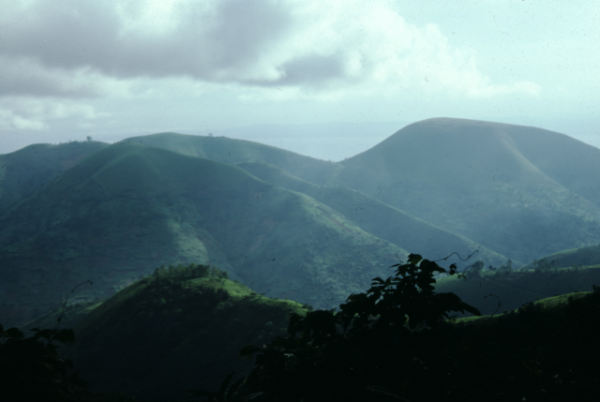Over 66 billion Rwandan francs to be used for restoring the Congo-Nile ridge
Leaders of districts along the Congo-Nile ridge have praised the project aimed at conserving biodiversity in these districts, stating that they expect it to reduce soil erosion and landslides that claim lives and destroy property.
They made these remarks in Karongi District on July 31, 2024, during the launch of the Congo-Nile Divide (CND) project, which will help tackle climate change and reduce wood-based fuel use in 10 districts in Western and Southern Rwanda.
The Congo-Nile ridge is a chain of mountains stretching from the north to the south of the Western Province. It separates the waters of the Nile River from those of the Congo River.
This project will operate in 10 districts: Musanze, Nyabihu, Rubavu, Ngororero, Rutsiro, Karongi, Nyamasheke, Rusizi, Nyamagabe, and Nyaruguru.
The Congo-Nile ridge watershed is crucial for Rwanda and the region, as it includes Volcanoes National Park, Gishwati-Mukura National Park, and Nyungwe National Park. The degradation of this area has significant impacts on many people.
The Mayor of Musanze District, Claudien Nsengimana, said Musanze is a district rich in biodiversity and one of the districts with a growing population.
“As the population increases, if there is no proper management of the environment, there is damage. It is good that this project will help us protect the environment, balancing environmental development with the development of the people,” he said.
This project comes a year after the Northern, Western, and Southern Provinces were hit by disasters that claimed the lives of more than 130 people and destroyed much infrastructure.
The Vice Mayor of Rutsiro District, Emmanuel Uwizeyimana, said the severity of these disasters was partly due to environmental degradation in the Congo-Nile ridge.
“Rutsiro is a district with steep hills and soft soils, which is why landslides occur. When we are fortunate to have a project that conserves the environment, it becomes a solution for the development and safety of the people,” he said.
The Director General of the Rwanda Forestry Authority, Dr. Concorde Nsengumuremyi, said the project will focus on agroforestry, planting indigenous trees, and conserving the edges of Gishwati-Mukura and Nyungwe National Parks.
“The Congo-Nile ridge is facing challenges related to climate change, where both animal and plant biodiversity need protection. This project aims to address that,” he said.
The CND project began in 2024 and is expected to end in 2028 at a cost of $50 million (over 66 billion Rwandan francs). The project will restore 1,500 hectares on the edges of Nyungwe National Park and 500 hectares on the edges of Gishwati-Mukura National Park.
The project director said it aligns with Rwanda’s goal of restoring two million hectares of land by 2030.
Rwanda and its partners have launched a project to restore the Congo-Nile ridge watershed.

